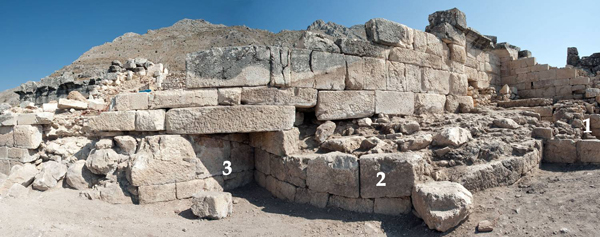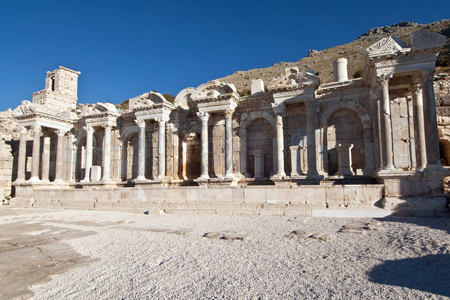 At the ancient city of Sagalassos, Turkey, archaeologists have discovered the oldest Roman baths in Asia Minor known to date.
At the ancient city of Sagalassos, Turkey, archaeologists have discovered the oldest Roman baths in Asia Minor known to date.
The new find means the Capito Baths in Miletus, built during the reign of Emperor Claudius (41-54 AD),have to concede theirposition as the oldest known Roman bathing complex in Anatolia.
Oldest Roman Bathsin Asia Minor
The ‘Old Bath’ was discovered at Sagalassos, an ancient city from Hellenistic and Roman times in southwestern Turkey. They were locatedbelow the previously unearthed Imperial Baths, dated to120-165 AD.
The newly discovered bathing complex is much older and smaller than the Imperial Baths which have a surface area of more than 5,000 square metres and is dated to 10-30 AD, though the Old Bath was probably built somewhat earlier, during the reign of Augustus or Tiberius.

The Old Baths measure 32.5 by 40 metres and are far better preserved than was originally thought. The complex walls must have been at least 12 metres high, of which 8.5 metres remain erect today.
When Hadrian selected Sagalassosas the centre of the Imperial cult for all of Pisidia, to which the city belonged this included the organisation of festivals and games (agones).
These attracted thousands, making a new urban infrastructure necessary. In order to accommodate the Pisidian visitors to the events, the Old Baths were replaced by the larger Imperial Baths.
Roman Style Bathing
The Roman bathing habits consisted of a succession of a warm water pool, a hot water pool and a cold water pool.
Each pool of these pools (a ‘piscina’ or ‘natatio’) was housed in a separate space; a tepidarium, a caldarium and a frigidarium, respectively.
The Sagalassos Archaeological Research Project
The Belgian Sagalassos Archaeological Research Project directed by Professor Marc Waelkens from the University of Leuven this past summer (photographs from the 2010 season) also revealed the faade of an important public building dating from the reign of Emperor Augustus (25 BC – 14 AD). It may have been the town hall of Sagalassos.
The team also concluded that the triumphal arch, until now thought to pay tribute to Caligula, was actually erected in honour of his uncle and successor Claudius (41-54 AD) and Claudius brother Germanicus, Caligulas father.

Anastylosis: Antoine Nymphaeum
At the end of this seasons excavations, an Antonine Nymphaeum was inaugurated at the Upper Agora of the Sagalassos site.
The reconstruction of the fountain was an ‘anastylosis’ project, whereby a structure is restored using the original architectural elements to the greatest degree possible.
The monumentwas constructed around 160AD,using 7 different kinds of stones. The restored fountain contains more than 85% of its original building blocks. Where needed for stability reasons, missing stones were replaced by blocks fashioned using antique technologies; the same way they would have been made 2,000 years ago.
Now, the9 metres high and 28 metres longAntonine Nymphaeum,is againfed by one of its original water canals. It collapsed when earthquakes destroyed Sagalassos in the7th century AD.